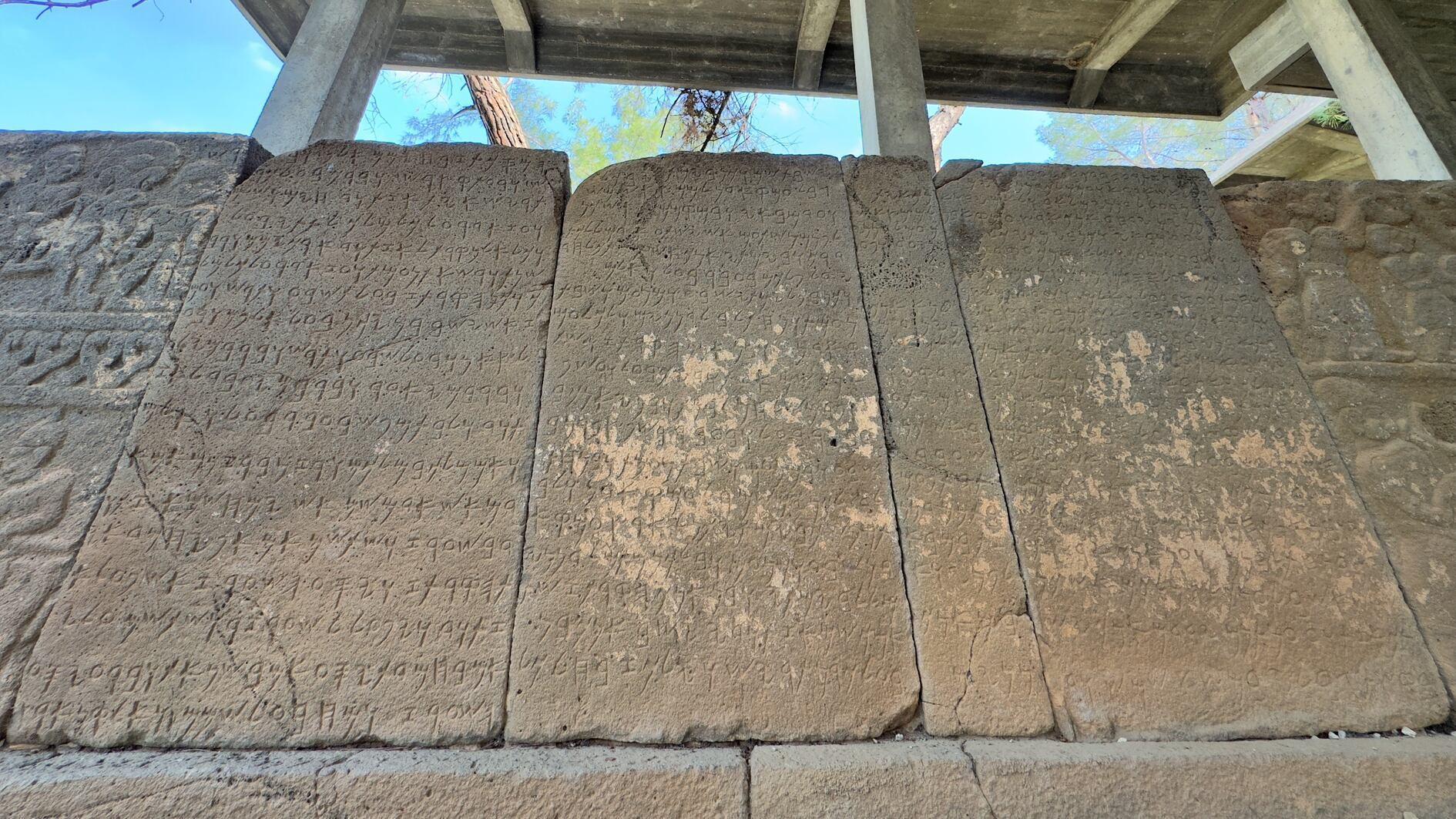
The Karatepe Inscriptions, located in the Karatepe-Aslantaş archaeological site in the southern province of Osmaniye's Kadirli district, have been included in UNESCO’s World Heritage Tentative List.
The inscriptions, which use both Anatolian hieroglyphs and the Phoenician language, have been undergoing extensive collaborative research. Now listed as the 70th documentary heritage from Türkiye on UNESCO’s Tentative List, the 2,700-year-old inscriptions are on display at the open-air Karatepe Aslantaş Museum.
The joint project was carried out by the Osmaniye Provincial Directorate of Culture and Tourism, Osmaniye Korkut Ata University (OKU) and the Global Strategic Research Association (KÜRSAD).
Osmaniye Governor Erdinç Yılmaz said, “As a result of collaborative work by the provincial directorate of culture and tourism, OKÜ and KÜRSAD on the bilingual inscriptions using Anatolian hieroglyphs and Phoenician language at the Karatepe-Aslantaş Open-Air Museum, the UNESCO Executive Board decided during its 221st session in Paris to include the Karatepe-Aslantaş Inscriptions, under the name ‘Karatepe Inscriptions,’ in the UNESCO Memory of the World Register as Türkiye’s 70th registered heritage item.”
Frontier fortress of Adanava
Yılmaz provided information about the site, saying, “The excavations that began in 1947 revealed two large fort gates, a road axis and rooms aligned along it. The Karatepe-Aslantaş Archaeological Site was a frontier fortress of the city-state of Adanava, one of the Neo-Hittite kingdoms of Anatolia. With its monumental walls and gates, it is a unique example of the military architecture of that era. Since the fortress was abandoned shortly after its establishment, it has preserved its original layout as a single-layered archaeological site with remarkable integrity.”
Yılmaz also emphasized the importance of the bilingual inscriptions in both Phoenician and Luwian. “Located at both gates, the basalt steles and reliefs feature inscriptions written in both Phoenician script and Luwian hieroglyphs. These are the longest known bilingual texts in these languages and played a critical role in the deciphering of Luwian hieroglyphs,” he said.
He noted that another unique feature of Karatepe-Aslantaş is the early and visionary conservation efforts led by pioneering Turkish archaeologist Halet Çambel. “Thanks to her efforts, conservation of statues and reliefs, protective roofing, and the declaration of the surrounding forested area as a national park all took place as early as the 1950s. These pioneering efforts in on-site preservation and site management distinguish Karatepe-Aslantaş as a leading example in archaeological heritage protection. These qualities contributed to its inclusion on the World Heritage Tentative List,” he said.